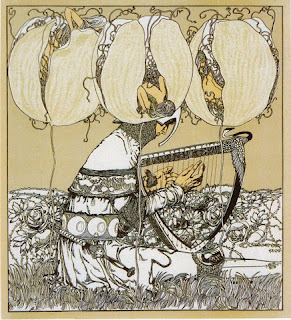
Wednesday, April 14, 2010
Graphic Postcards

Czeshka Calender
 carl otto czeschka - 1907
carl otto czeschka - 1907This almost purely typographic poster created by Czeschka demonstrates the experimentation of the era through the wonky letting and color juxtoposition. The word Kalender is hand-drawn in a kind of psychedelic-era kind of way. Also, the choice to use black type on a dark grey ground was an equally questionably choice. I do, however, think that the decorative swirls in white help create a balance to the piece and help draw the attention away from the rest.
Brandstätter, Christian. Wiener Werkstätte Design in Vienna, 1903-1932: Architecture, Furniture, Commercial Art, Postcards, Bookbinding, Posters, Glass, Ceramics, Metal, Fashion, Textiles, Accessories, Jewelry. New York, N.Y: Harry N. Abrams, 2003. Print.
Poster for Car Factory / Dairy Product

This lithograph, created by Moriz Jung, Wenzel Oswald, and Gustav Marisch, reflects the experimental nature of both form and content during the Wiener Werkstatte. This particular advertisement uses the contrast of a vibrant rainbow over dark clouds to presumably emphasize the almost divine beauty of these automobiles. The colors seem fairly bizarre but the very idea of cars traveling over a rainbow bridge makes the former pale in comparison.
The bottom piece is apparently an advertisement for a dairy product from Die Flasche, Volume II. The combination of the semi-nude caped child with a quirky red hat paired with the strange embellishments to his sides again lead me to question the approach of the artist. That being said, I can certainly see this in the context of other design from the era. The decoration and color use is very consistent with much of the graphic design of the times.
Wiener Werkstatte and high Art-Nouveau
When considering the artists of the Wiener Werkstatte, one normally expects abstracted figures and geometric forms and generally innovative images. However, a number of the big names in the WW produced work that, at first glance, looks quite like conventional French Art-Nouveau. The Wiener Werkstatte were producing work while Art-Nouveau was still very active in Europe. Thus it is unsurprising that they share stylistic forms. Granted, some of these examples were produced prior to the WW but they certainly serve as influences for these artist's later work.
(via art_nouveau and Pabst, Michael. L'art Graphique À Vienne Autour De 1900. Paris: Mercure De France, 1985.)
(via art_nouveau and Pabst, Michael. L'art Graphique À Vienne Autour De 1900. Paris: Mercure De France, 1985.)
Die Nibelungen
 Illustrations for 'Die Nibelungen' by Frans Klein, illustrated by Carl Otto Czeschka, 1906.
Illustrations for 'Die Nibelungen' by Frans Klein, illustrated by Carl Otto Czeschka, 1906.An ancient epic poem of Germany, 'Die Nibelungen' is a heroic tale passed down from the oral epics of ancient Pagan Germany. It tells the story of the dragon-slayer of legend, Seigfried and the mythological events surrounding his life. This story is well known as the great opera of Wagner, Der Ring des Nibelungen. Produced exactly 30 years after the opera premiered, this book by Klein and illustrated by Czeschka reflect the ornamental style present in some illustration of the time. Here, figures are composed almost entirely of abstracted ornament instead of sensual contours. They very much reflect a standard set by Gustav Klimt, which was the subject of much attention at the same time this book was published.

'Jurisprudence' detail, Gustav Klimt, oil on canvas, 1903-1907
(source Dorotheum Auctions)
Subscribe to:
Posts (Atom)













